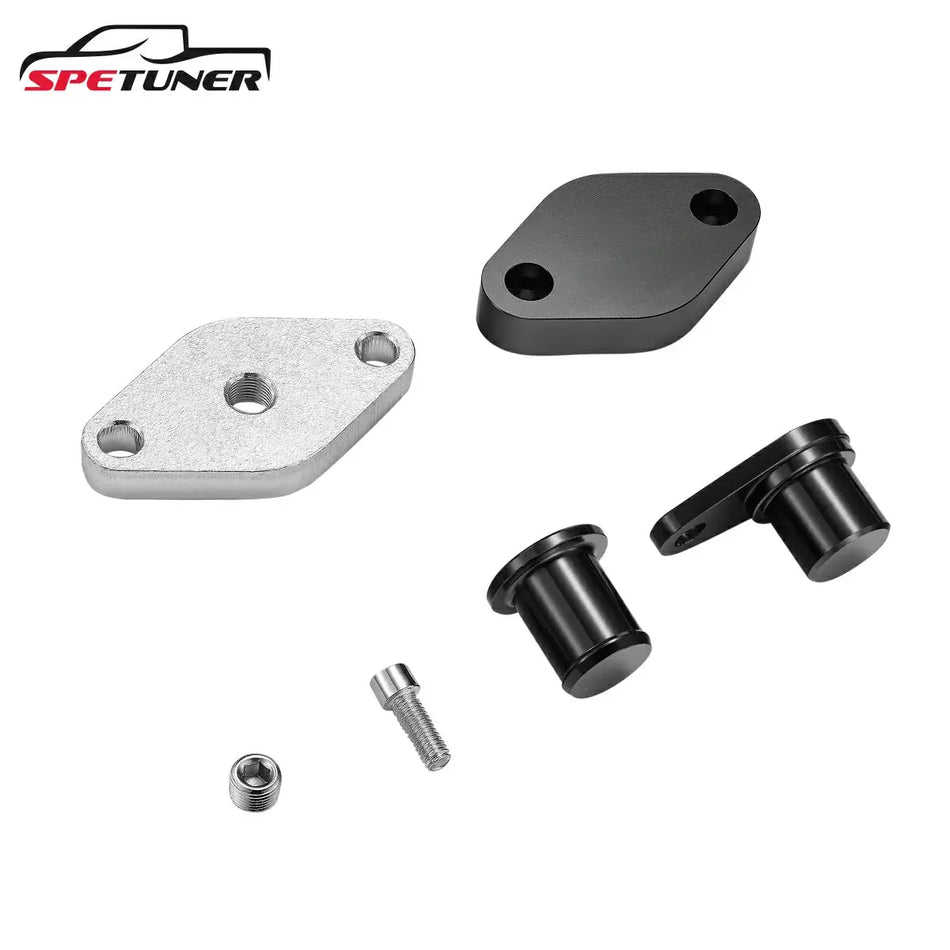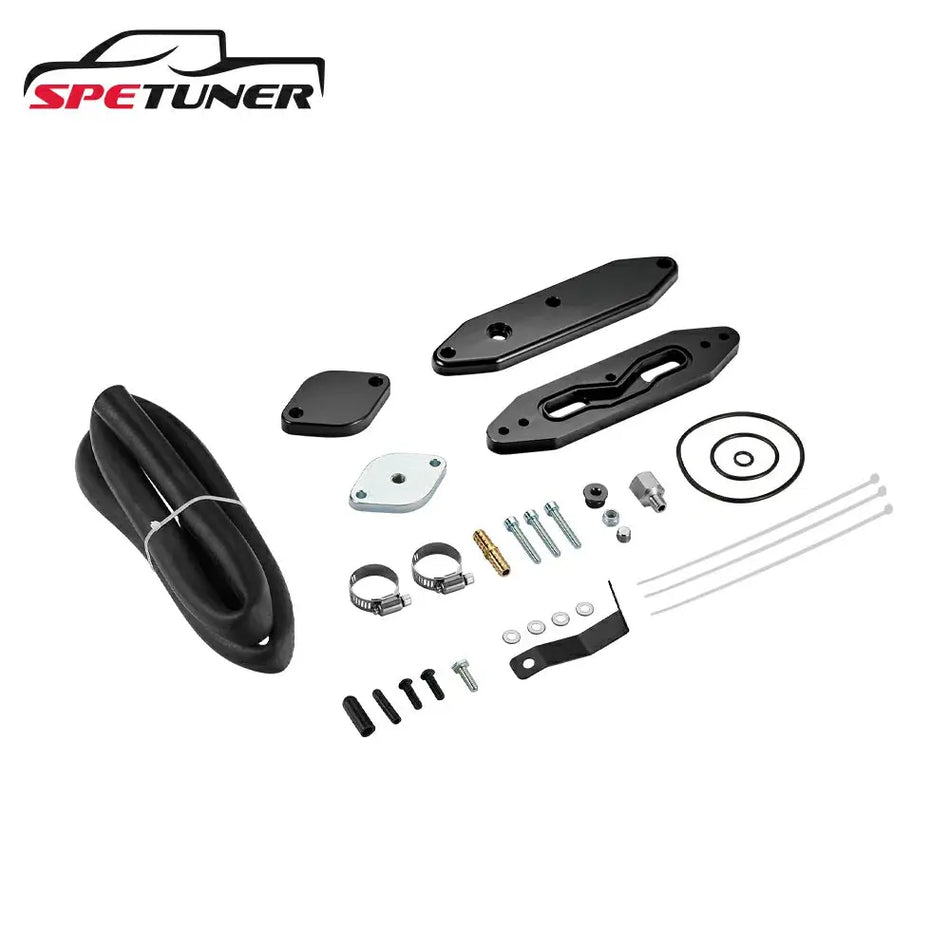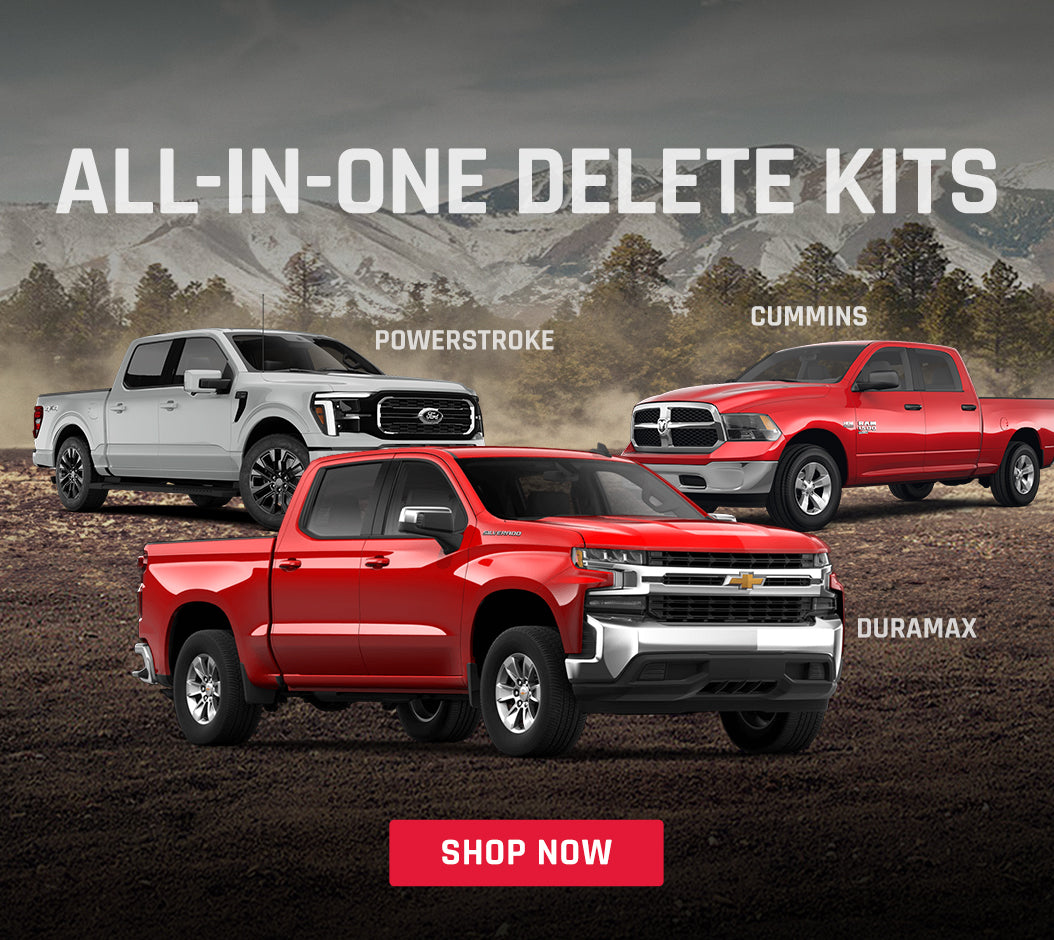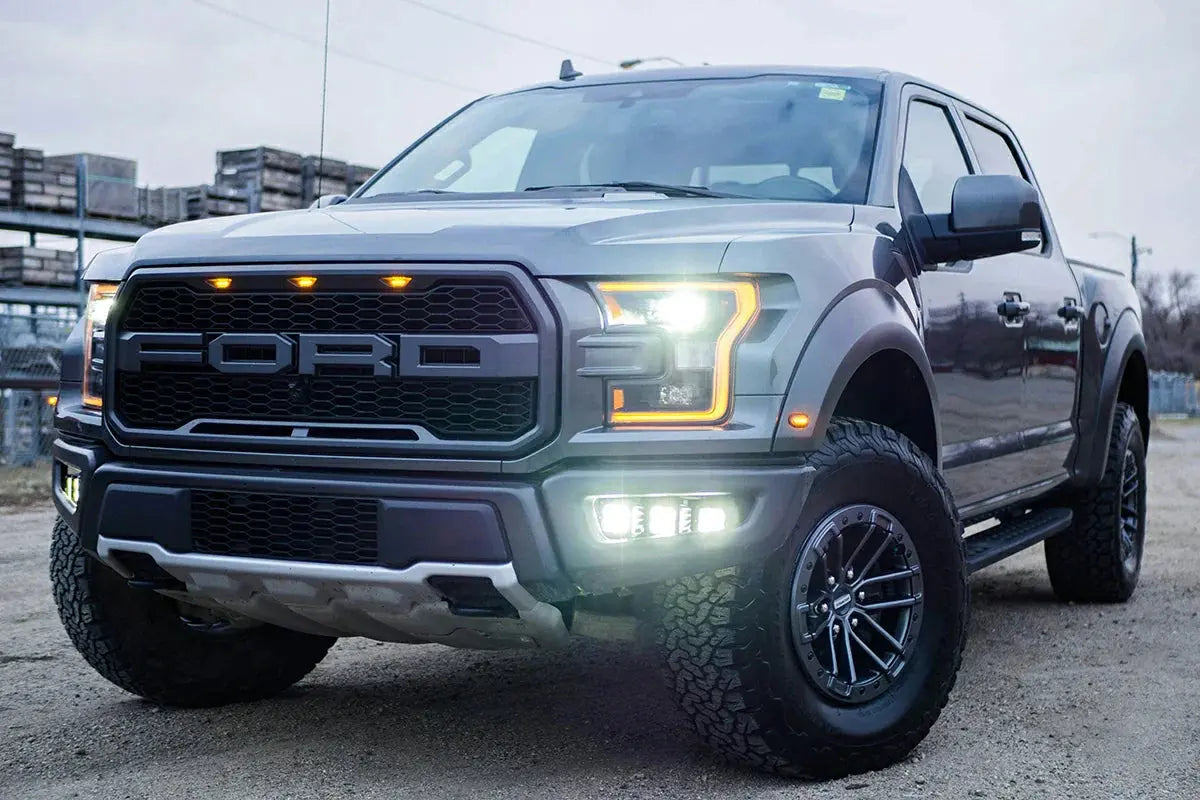If you’re dealing with frequent DPF regens, warning lights, sluggish throttle, or rising fuel consumption on a diesel truck, it’s normal to start looking at DPF race pipes, muffler deletes, or full exhaust upgrades. This guide walks through the main options, how they differ by vehicle model and year, and what you need to know about emissions rules before you touch anything.
The article is a bit lengthy, but you can quickly jump to the sections you care about using your browser’s in-page search (Ctrl+F / Command+F) for keywords like “Powerstroke”, “Cummins”, “Duramax”, or “compliance”.
All modifications described here are intended for off-road and competition vehicles only, where permitted by local laws. Do not apply these changes to vehicles used on public roads.
Key Takeaways (Before You Modify Anything)
- DPF delete and related exhaust changes are about flow and heat management — they can improve response and reduce backpressure on off-road builds, but they sit directly in the emissions “red zone” for road-use vehicles.
- Older diesels (roughly 2000–2010) usually have simpler exhaust layouts, so a race pipe or basic delete pipe can make a big difference with fewer supporting changes.
- Newer trucks (2010+) have tightly integrated DPF, SCR, and EGR systems — any delete-type modifications typically require ECU tuning, sensor strategies, and very careful attention to local emission rules.
- There is no one “universal” solution — Ford, RAM/Cummins, and Duramax all package their hardware differently, so you need platform-specific parts and guidance.
- Legal risk is real — in many regions, removing or bypassing emissions equipment on a road-going diesel can mean failed inspections, fines, or being forced to return the truck to stock.
Why Should You Understand DPF Delete?
The Diesel Particulate Filter (DPF) plays a crucial role in modern diesel vehicles, helping to filter out particulate matter from emissions to meet environmental standards. However, this filter also has downsides, particularly in terms of performance and long-term maintenance.
Because the DPF sits directly in the exhaust path, it increases backpressure. Over time, that extra restriction can affect engine power output, throttle response, and exhaust temperatures. As a result, an increasing number of diesel owners look into DPF delete options on dedicated off-road or competition trucks to improve exhaust flow and reduce heat stress.
DPF Delete Reasons
If you’re chasing increased power, faster acceleration, and more consistent throttle control on a non-street vehicle, a DPF delete-type setup can be attractive. By reducing exhaust backpressure and optimizing flow, a DPF race pipe or full delete system can unlock more usable power and help keep exhaust temps in check. It also reduces the risk of the filter plugging, which can otherwise mean frequent service or forced replacement.
However, when choosing to delete the DPF on an off-road build, it’s essential to consider how different models and years package the exhaust and emissions systems. Exhaust design, sensor layout, and emission strategies vary between platforms, so selecting the correct approach has a big impact on reliability and drivability.
Differences in Requirements by Vehicle Model and Year
For diesel vehicles produced between 2000 and 2010 (such as the Ford F-250 or RAM 2500), performance gains from DPF removal are typically quite noticeable, and the systems are usually more straightforward. For vehicles from 2010 onward (such as the Ford F-350 or newer GMC Duramax models), stricter emission regulations and more complex exhaust layouts mean any DPF delete solution usually needs ECU remapping and sensor strategies to keep the truck running correctly in off-road contexts.

What Is DPF Delete?
“DPF delete” generally refers to removing or replacing the Diesel Particulate Filter in the exhaust system of a diesel vehicle. The goal is to reduce exhaust backpressure so the engine can move gases out more easily, which can improve performance, throttle response, and sometimes fuel efficiency on off-road builds.
The DPF itself is designed to capture and store particulate matter from exhaust gases. Over time, those captured particles must be burned off in regeneration events. When regens are frequent or incomplete, the system can become a maintenance headache and a restriction on performance.
Effects of DPF Delete
Removing the DPF and installing a race pipe or similar hardware can improve exhaust flow, which often translates into better drivability on off-road or competition vehicles. Commonly reported changes include:
- Increased power output: With less backpressure, the engine can “breathe” more freely, making it easier to maintain power, especially under load.
- Improved throttle response: Acceleration can feel sharper, with a more immediate response when you step into the pedal.
- Enhanced fuel efficiency (in some cases): When exhaust flow is optimized and regens are no longer occurring, some off-road users see more stable fuel consumption.
At the same time, DPF delete also introduces serious considerations around legality, inspection requirements, and future resale — especially for vehicles that see any public-road use.

DPF Delete Needs Based on Vehicle Model and Year
By Vehicle Model: Ford, RAM, GMC Duramax, and Others
When planning a DPF delete-type setup, the vehicle model plays a major role in what hardware and tuning you’ll need. The exhaust layouts of Ford, RAM, and GMC Duramax diesels differ significantly, so each one requires a platform-specific approach.
Ford diesel vehicles (e.g., F-250, F-350):
Older F-series diesels (roughly 2003–2010) typically have simpler exhaust systems. Removing the DPF and installing a race pipe on a properly configured off-road build is comparatively straightforward and can deliver noticeable performance improvements.
Newer models (2011 and after) feature more complex systems due to stricter emissions regulations. On these trucks, DPF delete for off-road use usually involves not only physical removal of the filter but also ECU recalibration and sensor strategies to keep the engine management system happy.
RAM diesel vehicles (e.g., 2500, 3500, Cummins 6.7L):
For models before 2007, DPF-related changes tend to be simpler, with fewer components to work around. From 2007 onward, the introduction of SCR (Selective Catalytic Reduction) and additional emissions hardware makes the system more complex and sensitive to changes.
Post-2010 RAM/Cummins platforms typically require a more comprehensive solution, including ECU tuning and sensor strategies, to ensure the vehicle continues to operate correctly once off-road hardware is installed.
GMC Duramax diesel vehicles (e.g., Chevy Silverado 2500/3500):
Older Duramax models (around 2004–2010) are often compatible with relatively simple DPF race pipes or delete pipes on off-road builds. These systems usually focus on replacing the factory filter canister with a high-flow section.
Newer models (2010 and later) layer additional emissions controls such as SCR and more sophisticated EGR strategies on top of the DPF. In these cases, a complete off-road solution normally includes both exhaust components and tailored ECU calibration.
By Year: 2000–2010 vs. 2010 and After
Diesel Vehicles from 2000–2010
Earlier diesel vehicles often feature simpler exhaust systems with fewer integrated emissions components. On dedicated off-road builds, a DPF race pipe or basic delete pipe can provide significant gains in flow and response, with a relatively straightforward installation compared with newer platforms.
Diesel Vehicles from 2010 Onwards
With tighter emission standards, diesel vehicles from 2010 and beyond gained more complex exhaust aftertreatment packages. These systems may include:
- SCR (Selective Catalytic Reduction): Used to reduce nitrogen oxide emissions with DEF/urea injection.
- EGR (Exhaust Gas Recirculation): Recirculates a portion of exhaust back into the engine to control combustion temperatures and emissions.
On these platforms, simply removing the DPF on an off-road build is not enough. To keep the vehicle operating properly, modifications usually require:
- ECU remapping so the engine management system understands the new exhaust configuration.
- Sensor strategies or hardware solutions to avoid constant fault codes and limp-mode behavior.
- Careful evaluation of local emission laws to avoid legal or regulatory problems.

Major DPF Delete Components Explained
When planning a DPF delete-style modification on a non-road-going diesel, choosing the correct components is critical. Different parts affect not only exhaust flow and power but also sound, heat management, and long-term service requirements.
DPF Race Pipe / DPF Delete Pipe
Function: A DPF race pipe, sometimes referred to as a DPF delete pipe on off-road builds, replaces the factory DPF canister to reduce exhaust backpressure and improve flow. These pipes are typically designed with high-flow bends and internal diameters that allow the engine to move exhaust gases more efficiently.
Suitable vehicles: These pipes are common on diesels manufactured between roughly 2000 and 2010, including popular models like the Ford F-250/F-350, RAM 2500, and GMC Duramax trucks in off-road applications. On many older platforms, additional sensors or ECU changes are limited compared with newer trucks.
Considerations: For vehicles built after 2010, running a race pipe typically requires additional supporting components such as sensor strategies and ECU calibration to prevent constant fault codes and driveability problems.
DPF Delete Kit
Function: A DPF delete kit is generally a more complete package for off-road builds. It often includes a DPF race pipe plus additional hardware such as sensor solutions and, in some cases, supporting electronics. The aim is to remove the DPF assembly while keeping the vehicle operating predictably in off-road use.
Suitable vehicles: These kits are more common on vehicles manufactured after 2010, where a full solution is needed to address tightly integrated exhaust and emissions systems.
Considerations: Because post-2010 platforms have more complex emission strategies, owners using a DPF delete kit on a non-road-going build must plan for appropriate sensor handling and ECU work to avoid drivability issues.
DPF Bypass Pipe
Function: A DPF bypass pipe is designed to route exhaust around the filter without fully removing the original canister. This is sometimes used on off-road setups that aim to improve flow while keeping certain aspects of the original hardware in place.
Suitable vehicles: Bypass approaches may appeal to owners who want to experiment with flow changes on non-road-going trucks while still retaining some of the stock hardware layout.
Considerations: A bypass pipe generally offers moderate improvements in flow but does not completely remove emissions components. Local regulations still apply, and the system may still be treated as modified from an emissions standpoint.
Muffler Delete Pipe
Function: A muffler delete pipe removes the muffler from the exhaust system to increase both sound and flow. This is aimed at vehicle owners who want a louder, more aggressive exhaust tone along with small reductions in backpressure on off-road or competition trucks.
Suitable vehicles: Most truck platforms can run a muffler-less section in off-road scenarios, particularly performance-oriented diesel pickups such as Ford and RAM models.
Considerations: A muffler delete significantly raises exhaust noise. It generally doesn’t change the emissions hardware itself, but local noise regulations can still come into play, even in off-road or private-land environments.
Turbo-Back Systems
Function: A turbo-back exhaust system starts from the turbocharger outlet and replaces the entire exhaust system downstream. It usually includes a DPF race section, mid-pipe, and muffler (or straight-through components), offering a more comprehensive exhaust upgrade for serious off-road builds.
Suitable vehicles: Turbo-back systems are common on high-power, off-road-focused builds such as modified Ford F-250/F-350 and RAM 2500 trucks, where owners want maximum control over exhaust routing and sound.
Considerations: Because a turbo-back replaces nearly everything from the turbo down, it increases both performance potential and exhaust volume. These setups often require ECU tuning and sensor strategies to keep the engine management system stable.
DP-Back / Downpipe-Back Systems
Function: A DP-back or downpipe-back exhaust starts from the downpipe and replaces the remaining sections. It focuses on improving flow and reducing backpressure without necessarily modifying all upstream components.
Suitable vehicles: DP-back systems work for owners who want better exhaust performance on non-road-going trucks but are not planning a full DPF removal or turbo-back conversion.
Considerations: Because these systems stop at the downpipe, they can improve flow and reduce engine load without completely re-engineering every part of the emissions system. Even so, any changes must still be considered in light of local regulations and the intended use of the vehicle.

DPF Delete Kit Selection Options
SPETUNER offers platform-specific DPF-related solutions for various diesel truck models and engine configurations in off-road/competition contexts. Depending on engine family and model year, owners can choose components that align with their performance goals and maintenance priorities.
Ford Powerstroke Series
Suitable vehicles: Includes versions such as 2020+ 6.7L Powerstroke, 2008–2010 6.4L Powerstroke, and 2011–2019 6.7L Powerstroke in non-road-going applications.
Examples of available options:
2020+ 6.7L Powerstroke DPF race pipe with muffler section
Typical price range: around $229–$255
- Increased power: Reducing DPF-related restriction helps the engine maintain power under heavy load.
- Improved fuel efficiency: With less exhaust resistance, the engine can operate more efficiently on long-distance or heavy-duty off-road work.
- Extended engine life: Lower backpressure and exhaust temperatures help reduce carbon buildup and heat stress over time.
2008–2010 6.4L Powerstroke DPF race pipe options
Typical price range: about $149.99–$195
- Faster acceleration: Improved exhaust flow can deliver a more responsive feel, especially when towing or climbing.
- Cost-effective gains: Offers meaningful performance changes at a relatively accessible price point for off-road setups.
2011–2019 6.7L Powerstroke DPF race pipe options
Typical price range: roughly $229–$1,050 (depending on configuration)
- Wide coverage: Designed to support multiple Powerstroke variants across these model years in off-road builds.
- Multiple configurations: Different layouts allow owners to choose based on noise preference, packaging, and performance targets.
Cummins Series
Suitable vehicles: Includes models such as 2019+ 6.7L Cummins and 2007–2009 6.7L Cummins in off-road use.
Examples of available options:
2019+ 6.7L Cummins EGR-related solutions
Typical price range: roughly $109.77–$398
- Increased power output: Reducing hot recirculated exhaust in off-road builds can improve fresh-air charge and combustion stability.
- Better fuel efficiency: Less wasted fuel during partial or ineffective EGR events can translate into more consistent consumption.
- Reduced maintenance costs: EGR-related failures are common on many modern diesels; changing the system design on non-road-going trucks can lower long-term repair frequency.
2013–2018 6.7L Cummins EGR-related options
Typical price range: about $32.88–$141.70
- High value: Allows owners to address EGR-related concerns in off-road contexts at a relatively modest cost.
- Long-term savings: Reducing exposure to EGR system failures can help lower repair and maintenance expenses over time.
Duramax Series
Suitable vehicles: Includes models such as the 2006–2007 6.6L Duramax LBZ and the 2004–2005 6.6L Duramax LLY, along with other Duramax platforms used in off-road builds.
Examples of available options:
2006–2007 6.6L Duramax LBZ DPF race pipe options
Typical price range: about $249–$400
- Increased power and response: Improved exhaust flow helps the engine respond faster when you roll into the throttle.
- Improved fuel efficiency: Removing a major restriction can help reduce wasted energy in the exhaust system.
- Extended engine life: Less buildup and lower exhaust temperatures can reduce stress on key engine components.

DPF Delete and Compliance Issues
When considering DPF-related upgrades, owners must think beyond power and drivability and focus on emission regulations. In markets like the United States and Canada, emission standards are strict, especially for vehicles manufactured after 2010. Ignoring these rules can lead to serious legal and financial consequences.
U.S. Emission Regulations (EPA)
In the United States, the Environmental Protection Agency (EPA) sets and enforces emission regulations. For diesel vehicles, the EPA requires effective emission control systems, including Diesel Particulate Filters (DPF), to reduce particulate matter and other pollutants.
DPF delete and EPA compliance:
On emission-controlled vehicles, removing the DPF or other emissions components will usually violate the original certification. For post-2010 trucks, the emissions package often includes the DPF along with Selective Catalytic Reduction (SCR) and Exhaust Gas Recirculation (EGR) systems. Altering or deleting these can push emissions beyond legal limits and cause the vehicle to fail testing or roadside inspections.
Vehicles after 2010:
From 2010 onward, EPA standards became significantly more stringent. If components like the DPF, EGR, or SCR systems are removed or defeated on a road-going vehicle, the truck will not meet the required standards and cannot be legally driven. This can result in failed inspections, fines, or being ordered to return the truck to stock.
Canadian and CARB-Style Regulations
The California Air Resources Board (CARB) has developed some of the strictest emission standards, especially for diesel vehicles. CARB’s influence extends beyond California to other U.S. states and some Canadian regions that adopt similar rules. In these areas, diesel vehicles must retain a complete emission control system, including a functioning DPF.
CARB standards and DPF delete:
If a vehicle owner removes the DPF on a truck registered in a CARB-style region, the vehicle will no longer comply with local emission requirements. For vehicles manufactured after 2010, these rules are especially strict, and losing the emissions package can mean failing annual inspections, losing legal roadworthiness, and facing penalties.
Emission Testing and DPF Delete
Many states and provinces require regular emissions testing. In regions with these programs, vehicles must pass inspections to maintain registration and legal road status. If the DPF is deleted without a compliant alternative, the vehicle will typically fail these tests.
Common testing issues:
- Without a DPF, particulate emissions rise significantly, making it difficult or impossible to meet local standards.
- Visual inspections may detect missing or modified components even before tailpipe measurements are taken.
Potential solutions (off-road only):
On strictly off-road vehicles, owners sometimes use sensor strategies or ECU changes to stabilize operation after hardware changes. However, these approaches do not make the vehicle legal for public-road use where a DPF and other emissions systems are required. It’s essential to understand that “no check-engine light” is not the same as legal compliance.
Compliance Risks
Deleting the DPF or related emissions components comes with several risks:
- Failure to pass emission tests: Removing the DPF can cause the vehicle to emit more pollutants, leading to failed inspections, especially for trucks built in 2010 or later.
- Legal consequences: Violating EPA or CARB-style regulations may result in fines or other enforcement actions. In some cases, owners are required to restore the original emissions system at their own expense.
- Regional variability: Different states and provinces apply different rules. Some are less tolerant of emissions modifications, while others follow California-style standards. The same truck can face very different regulatory environments depending on where it’s registered and driven.
How to Avoid Compliance Issues
Before deciding on any DPF-related changes, vehicle owners should take the following steps:
- Understand local emission regulations: Research the rules in your region. For vehicles manufactured after 2010, confirm whether any emissions changes would prevent the truck from passing required tests or maintaining registration.
- Consult with professional tuning shops: A reputable diesel specialist can help you balance performance goals with legal requirements and can clarify what is appropriate for off-road versus on-road use.
- Choose legal modification paths for road vehicles: If the truck must remain street-legal, prioritize maintenance, diagnostics, and approved upgrades instead of delete-type modifications. On off-road builds, use high-quality components and responsible calibration to keep the engine operating safely within its intended use case.
Conclusion
In summary, while DPF-related modifications and other exhaust changes can deliver meaningful performance gains — including improved power, fuel stability, and potential engine longevity on dedicated off-road builds — they also carry serious legal and compliance implications for vehicles used on public roads.
For any diesel truck that must remain street-legal, maintaining the factory emissions system and focusing on proper maintenance, diagnostics, and approved parts is usually the safest choice. For off-road or competition-only vehicles, it’s essential to plan modifications carefully, understand local rules, and work with experienced professionals to ensure the engine stays reliable and safe.
Always put compliance and safety first, so you can enjoy the benefits of a well-sorted diesel setup without unnecessary risk.










